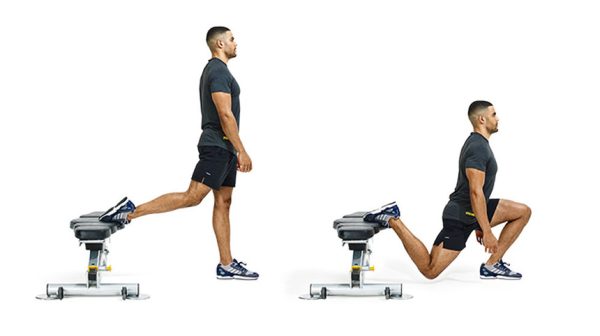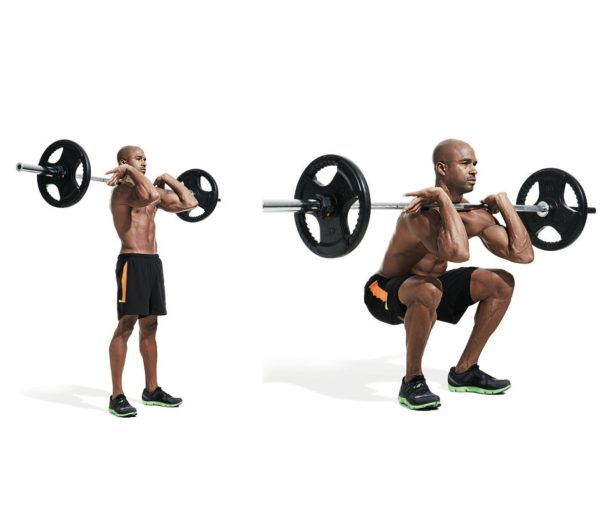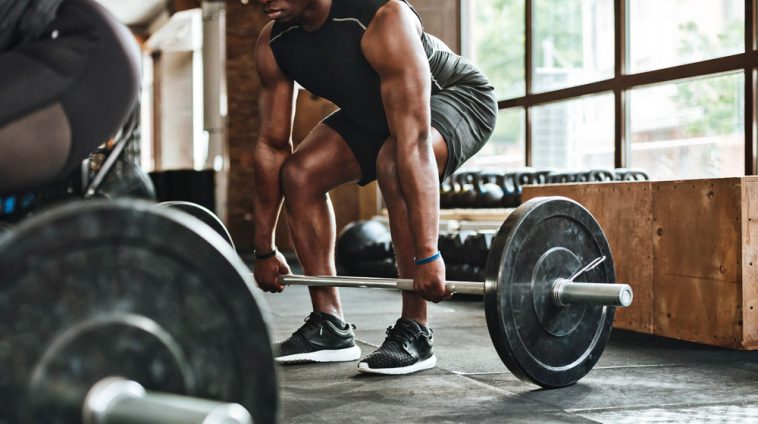A healthy lifestyle usually comprises nutrition, exercise, and sleep, which coordinate to make one healthy and happy. Exercise offers a wide range of physical and psychological health benefits that help you stay fit and healthy.
Exercises that engage the upper body and lower body have multiple health benefits, including weight loss, enhanced mood, better digestion, strengthened muscles and bones, better sleep, improved brain function, and reduced stress and anxiety.
When you think about lower body exercises, you probably envision squats, deadlifts, and similar variations. However, there are several lower body exercises and workouts that help to improve balance and strengthen the core and result in a strong lower body.
Best Exercises for Lower Body Workout
1. Bulgarian Split Squat

The Bulgarian Split Squat Squat is a lower body exercise that strengthens the muscles of the legs, including the quads, hamstrings, glutes, and calves. It helps to improve balance by engaging and strengthening the core.
Benefits
- Builds balance and unilateral strength as it focuses on one leg at a time.
- It allows you to keep track of imbalances in the left-to-right muscles.
- Works multiple muscles, including the quads, glutes, hamstrings, abdominal muscles, and erectors in the back.
- Significantly improves strength with minimal to no gym equipment.
Method
- Standing in front of a knee-level bench or step.
- Lift your right leg and place the top of your foot on the bench behind you.
- Hold a dumbbell in each hand while your foot rests atop the bench.
- Slowly lower your body until your right knee nearly touches the ground and your left thigh is parallel to the floor.
- Push up through your left leg to return to the standing position.
- Repeat the downward movement and work your way up again as you build your strength.
2. Romanian Deadlift

The Romanian deadlift is a traditional barbell lift that helps prevent spinal rounding during heavy pulls. It is a powerful strengthening movement used by fitness and sports athletes to garner strength and power.
Benefits
- Increases hamstring, lower back, and hip strength specific to the traditional deadlift.
- Increases muscular hypertrophy.
- Improves hip function and spinal stability.
- Builds positional awareness and strength.
Method
- Stand straight with your feet hip distance apart.
- Hold a barbell with a shoulder-width grip.
- Bend your hips back as far as possible while bending your knees.
- Bring your raised chest and shoulders down while slowly lowering the weight and retaining the length of your spine.
- Keep lowering the weight until you feel the tension in your hamstrings as you continue to keep the barbell close to your body.
- Maintain the natural-arched position of your back and work your way upwards using your hamstrings and glutes.
3. Barbell Front Squat

The barbell front squat is a squat variation that works the muscles of the upper back, quads, and core. This type of compound exercise helps to increase lower body strength by engaging the quadriceps, glutes, hamstrings, and hips.
Benefits
- Improves quad strength (by keeping the weight forwards and making the quads do more work).
- Focuses more on core, quad, and upper back mobility as compared to the back barbell squat.
Method
- In a squat rack or cage, place the barbell high onto your shoulders.
- Support the bar with your shoulders and upper chest.
- Stand with your feet at shoulder width and grasp the bar tightly.
- Bend your hips back and then bend your knees to lower your body as far as you can while maintaining the natural arch in your lower back.
- Descend into a squat.
- Once you reach the bottom position, push through your feet to return up.
4. Dumbbell Stepup

The weighted (dumbbell) step up helps to build quads while exerting minimal stress on the knee. This movement mainly involves the posterior chain muscles (glutes and hamstrings) which are important for climbing stairs and similar movements.
The weighted step-up is a simple exercise and requires minimal, basic equipment. It can be modified according to your fitness level and goals.
Benefits
- Builds strength in the quadriceps (front of the thigh).
- Improves balance, stabilization, and proprioception (refers to a sense of joint position) as you move up and down, and forward and backward while carrying weights.
- The weighted step-up builds strength in each leg individually, thereby building equal strength in each leg.
Method
- Stand lunge-length behind a bench or another elevated surface of appropriate height so that when you step on it, your thigh is parallel to the floor.
- Hold a dumbbell in each hand and step onto the bench but leave your trailing leg suspended in the air.
5. Swiss Ball Leg Curl

The Swiss ball leg curl is a challenging exercise and requires an intermediate fitness level. You should engage in this exercise after the advanced deadlifting or hip thrusting exercises have been completed. Different Swiss ball hamstring curl variations primarily target the hamstrings, glutes, lower back, and abs.
Benefits
- Increases lower body strength, primarily in the hamstrings and glutes, and increases core strength.
- This exercise is an effective way of losing fat and increasing body flexibility.
Method
- Laying on your back and place your heels/lower legs on the ball. Your arms should be flat on the floor and aligned with your shoulders to increase stability.
- Take a deep breath and push your hips up so that they are in line between your knees and shoulders, but keep your knees straight.
- While you raise your hips, bend your knees and roll the ball back towards you.
- Make sure that your movements are smooth and controlled and that you do not use force to curl the ball towards you.
- Reset and repeat before each rep.
It is advisable to work out with a fitness trainer when establishing a routine to improve lower body strength and stability. This will allow you to exercise safely and appropriately, without injuring yourself.
Increase the intensity, frequency, and duration of the exercise gradually so that your body adapts to the changes.
If you are unable to hit the gym, there are plenty of other exercises you can do to strengthen your lower body and increase its flexibility.







